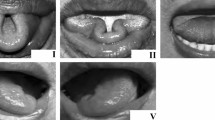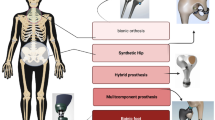Abstract
The mechanical input impedance of teethin vivo has been measured over the frequency range of 60–5000 c/s. A generator was used which delivered a sinusoidal force of variable frequency and constant peak-to-peak amplitude of 4·4×104 dyn. Our data plus those of others indicate that the suspensory apparatus of the tooth consists of several equivalent springs and dampers. The purpose of the initial study is to establish a correlation between some aspect of mechanical impedance and ‘clinical mobility’ or ‘looseness’ of teeth. An increase in tooth mobility has long been regarded as a cardinal finding in periodontal disease and a key consideration in determining the feasibility and mode of restoring lost dental function. Finally, we hope to develop a suitable clinical instrument for measuring tooth mobility objectively.
Sommaire
L’impédance d’entrée mécanique des dentsin vivo a été mesurée dans la gamme de fréquences de 60 à 5000 Hz. On a utilisé un générateur délivrant une force sinusoidale de fréquence variable et d’amplitude crête à crête constante de 4,4×104 dyn. Nos résultats, et ceux d’autres chercheurs, indiquent que le système suspenseur de la dent se compose de plusieurs ressorts et amortisseurs équivalents. Le but de l’étude initiale est d’établir une corrélation entre quelques aspects de l’impédance mécanique et la ‘mobilité clinique’ ou le jeu des dents. Un accroissement de la mobilité d’une dent a été longtempts regardé comme une découverte importante dans l’étude de la périodontite, et comme un élément clef dans la détermination du mode selon lequel on pourrait ou non restaurer la fonction dentaire perdue. Finalement, nous espérons constituer un instrument clinique capable de mesurer objectivement la mobilité d’une dent.
Zusammenfassung
Die mechanische Eingangsimpedanz menschlicher Zähnein vivo wurde über den Frequenzbereich von 60 bis 5000 Hz gemessen. Ein Generator lieferte eine sinusförmige Kraft variabler Frequenz und konstanter Gipfel-Gipfel-Amplitude von 4,4×104 dyn. Die Daten dieser und anderer Untersuchungen ergeben, daß der Aufhängeapparat der Zähne aus mehreren äquivalenten Federn und Dämpfungen besteht. Der Zweck dieser Arbeit soll zunächst sein, eine Korrelation zwischen einem Aspekt der mechanischen Impedanz und der ‘klinischen Beweglichkeit’ oder ‘Wackligkeit’ von Zähnen herzustellen. Erhöhung der Zahnbeweglichkeit wurde lange als Hauptzeichen bei Periodontitis und als Angriffspunkt für Erwägungen über Möglichkeit und Art der Wiederherstellung verlorener Zahnfunktionen betrachtet. Wir hoffen, schließlich ein geeignetes klinisches Instrument zur objektiven Messung der Zahnbeweglichkeit zu entwickeln.
Similar content being viewed by others
References
Manly, R. S.,et al. (1951) An instrument for measuring tooth mobility.J. Periodont. 22, 148–155.
Miller, S. C. (1950)Textbook of Periodontia, 3rd Edn. Blakiston, New York.
Muehlemann, H. R. (1951) Periodontometry, A method for measuring tooth mobility.J. oral. Surg. Med. Path. 4:9, 1220–1233.
Meuhlemann, H. R. (1960) Ten years of Periodontometry.J. Periodont. 31, 110–122.
Muehlemann, H. R. (1965) Tooth mobility—its causes and significance.J. Periodont. 36, 148–153.
Polin, H. S. (1963) Tooth Mobility Indicator, U.S. Patent 3,093,115—June 18, 1963.
Author information
Authors and Affiliations
Rights and permissions
About this article
Cite this article
Noyes, D.H., Clark, J.W. & Watson, C.E. Mechanical input impedance of human teethin vivo . Med. & biol. Engng. 6, 487–492 (1968). https://doi.org/10.1007/BF02474287
Received:
Revised:
Issue Date:
DOI: https://doi.org/10.1007/BF02474287




